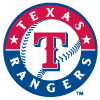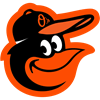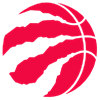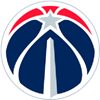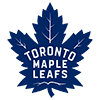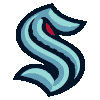I'm not quite sure what first caused me to fall in love with the medical field, but I think it was a multitude of things. I know I have always liked helping people, and my mom was routinely saying I would be a great doctor. Science was easily my favorite subject in school, and as a clumsy kid I spent way more time in the ER then I want to admit. I've lost track of the number of times I have been X-rayed and MRI'ed, having broken multiple bones for an assortment of reasons. A week before my 17th birthday I managed to break my nose and my collarbone in two separate incidences. With each injury I developed a growing interest in the images taken of the injury site. In fact, I still have the original films of collarbone fracture in my athletic training room. The allure of working with sports pulled me away from medical school, but my fascination and respect for medical imaging remains. Over the years I have learned how difficult the field of radiology can be and the subtle nuances that come with diagnosing sports-related injuries.
X-rays are most often utilized for bone-related issues. The resulting images are two-dimensional, which is why multiple images in a variety of body positions are often taken. The images are then examined for any possible breaks (fractures) to determine the extent of an injury and the appropriate course of action. However, X-rays do have their limitations. Some fractures are tiny,
I'm not quite sure what first caused me to fall in love with the medical field, but I think it was a multitude of things. I know I have always liked helping people, and my mom was routinely saying I would be a great doctor. Science was easily my favorite subject in school, and as a clumsy kid I spent way more time in the ER then I want to admit. I've lost track of the number of times I have been X-rayed and MRI'ed, having broken multiple bones for an assortment of reasons. A week before my 17th birthday I managed to break my nose and my collarbone in two separate incidences. With each injury I developed a growing interest in the images taken of the injury site. In fact, I still have the original films of collarbone fracture in my athletic training room. The allure of working with sports pulled me away from medical school, but my fascination and respect for medical imaging remains. Over the years I have learned how difficult the field of radiology can be and the subtle nuances that come with diagnosing sports-related injuries.
X-rays are most often utilized for bone-related issues. The resulting images are two-dimensional, which is why multiple images in a variety of body positions are often taken. The images are then examined for any possible breaks (fractures) to determine the extent of an injury and the appropriate course of action. However, X-rays do have their limitations. Some fractures are tiny, think millimeters in size, and may not be visible on the initial films. A subsequent or "follow-up" X-ray may show the fracture but only because the break has become visible as the healing process progresses.
MRIs are more advanced and use magnets over radiation. The machine takes a multitude of cross-sectional scans of the scanned site, which are then layered to create a 3D image of the area of concern. MRIs can be used to view soft tissue structures like muscle and ligaments. And while the images are more detailed, reading them remains very nuanced.
The subtlety of medical imaging can have a direct impact on fantasy sports. The results of these tests often dictate recovery timelines and decisions regarding which injured list to utilize. As a result, any possible errors or unforeseen issues can make it difficult to make the appropriate roster decisions for big-league clubs and invested fantasy managers.
Two baseball players, Willson Contreras and Christian Encarnacion-Strand, suffered significant injuries recently that required medical imaging.
Contreras' injury was straightforward. The impact from the bat of J.D. Martinez left him with a fractured forearm. The forearm is made up of two bones, the radius and the ulna. Based on video of the incident, it is likely Contreras' injury involves the pinky-side ulna. The break was addressed surgically, meaning a plate was inserted to ensure the pieces of the displaced bone will heal in proper alignment. He is expected to miss 10 weeks recovering. Ivan Herrera will continue as the starting catcher for the Cardinals with Contreras out.
Encarnacion-Strand's situation was a bit more complicated. He too fractured his ulna, specifically the ulnar styloid located at the wrist. However, his break was not discovered until weeks after he was struck on the area by a pitch. This isn't likely a case of mismanagement by the Reds medical staff but instead an example of the sensitivity of medical images. The fact that a second set of images was ordered after the symptoms persisted is a good indicator the Cincinnati crew appropriately managed their player. Jeimer Candelario has taken over at first base and has shown signs of life after a slow start to the year. He has hit safely in four of the Reds' last six games, including a home run and five RBI.
Check Swings
Kris Bryant: Bryant's lower back strain has kept him out for more than a month, though his time on the IL appears to be ending. The Rockies hope he can begin a rehab assignment with Triple-A Albuquerque Tuesday with a chance of returning to Colorado for the weekend. Still, I won't blame those invested here if they remain a bit skeptical given Bryant's injury history.
Jung Hoo Lee: The Giants outfielder dislocated his left shoulder Sunday. He is slated for an MRI on Monday, which will provide more context to the injury. When a joint is forced out of alignment, the subsequent recovery and treatment is often dictated by the amount of damage accrued by neighboring structures. For shoulder dislocations, the primary concern is the glenoid labrum and the stabilizing ligaments of the area. An IL trip is almost guaranteed, and an extended absence should be anticipated.
Shohei Ohtani: Lower back tightness limited Ohtani throughout the weekend. While the injury kept him out of the lineup on Sunday, manager Dave Roberts insisted the issue is not serious and would not keep Ohtani sidelined for long. Keep an eye on Ohtani's availability for their upcoming series against the rival Giants, but there doesn't seem to be a reason for concern at this point.
Evan Phillips: Phillips added his name to this list of players to suffer hamstring strains this season. The Dodgers right-hander suffered a Grade 1 hamstring strain on May 3 but was able to play catch over the weekend. The team is optimistic he will be able to return when first eligible, though I wouldn't be surprised if his absence lasts a bit longer to ensure he is as close to 100 percent as possible.
Austin Riley: The Braves third baseman is considered day-to-day after leaving Sunday's game with left side tightness. The current designation isn't a true diagnosis but instead a description of the current symptom bothering Riley. The list of possibilities ranges from strain to the obliques or intercostals to a more serious rib cartilage injury. Look for a more definitive update to be provided following further testing.
Dansby Swanson: The Cubs took a proactive approach with Swanson's nagging knee injury and placed him on the 10-day IL. The injury is being described as a knee sprain, though the severity and ligament involved have not been revealed. It's hard to estimate how long Swanson will be out, so instead pay attention to his progression in recovery to get a better idea of his overall health status.











